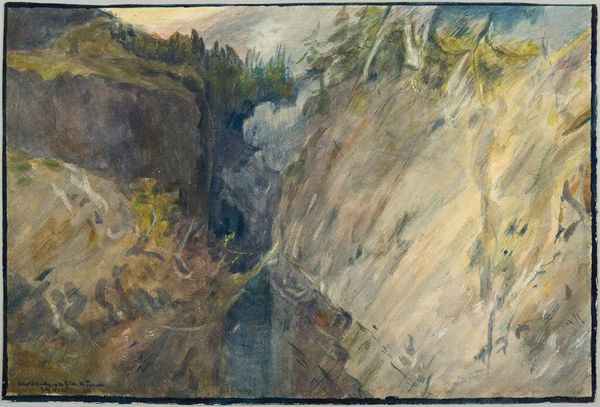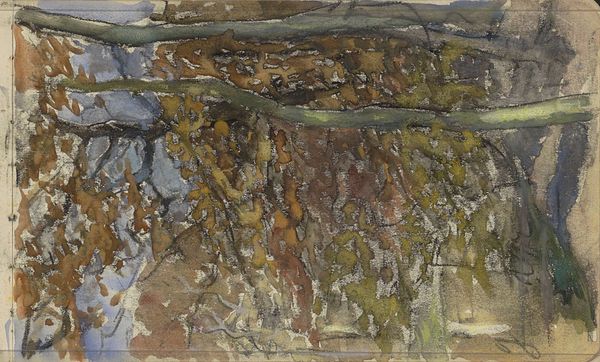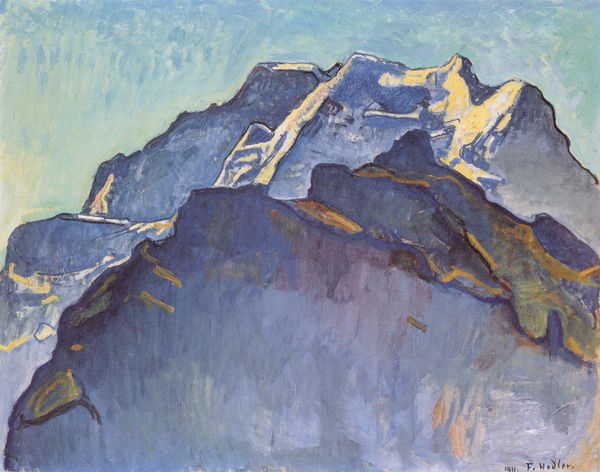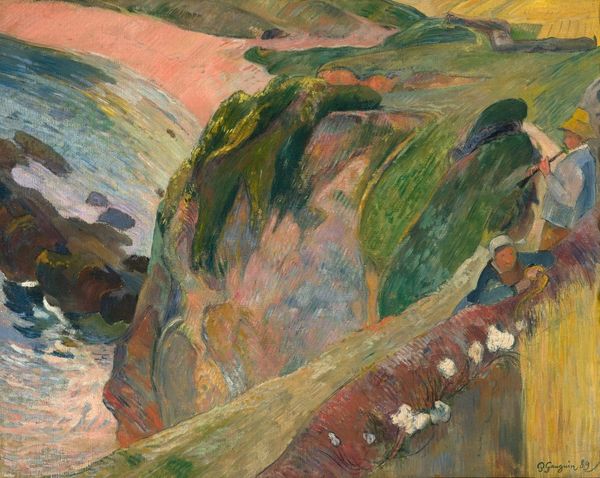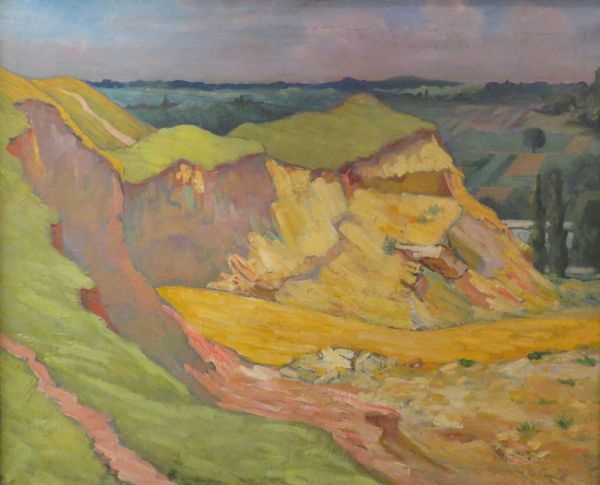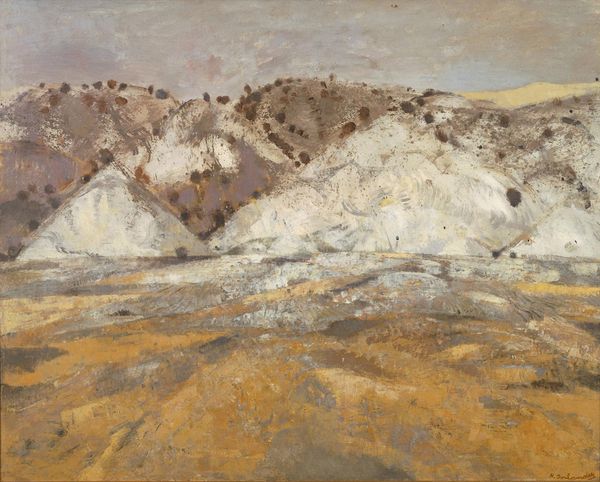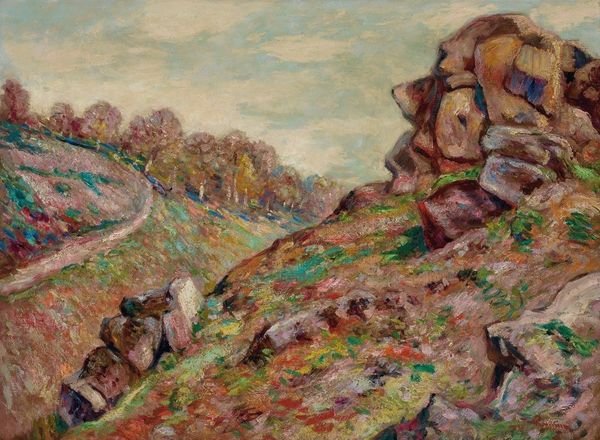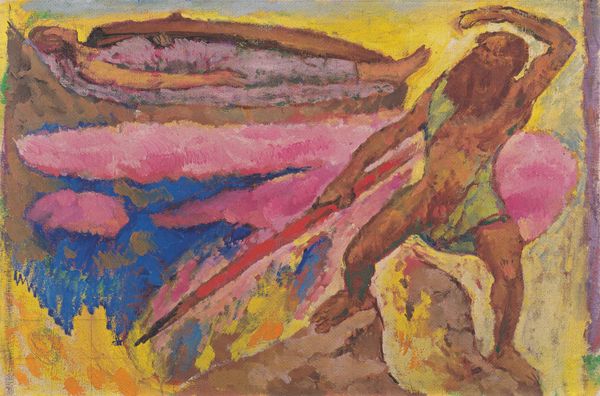
oil-paint
#
oil-paint
#
landscape
#
german-expressionism
#
oil painting
#
expressionism
#
history-painting
#
expressionist
Dimensions: 90.5 x 80.5 cm
Copyright: Public domain
Curator: Here we have Albin Egger-Lienz’s “South-front,” an oil painting from 1908. It's striking how the artist portrays a military landscape. Editor: It does strike a somber, almost monumental tone. The heavy use of earth tones—ochre, tan, umber—evokes a sense of weight and oppression, and the scale is immense. I'm also struck by the blocky brushstrokes. Curator: Absolutely. Consider this piece in its historical context. Egger-Lienz, though not a soldier at the time, painted this landscape reflecting a broader climate of nationalism and militarism sweeping through Europe. It presents war, or rather the space where war happens, as a stark, brutal affair. We must remember Austria-Hungary’s ambitions during this period. Editor: Indeed, those layered colours are almost sculptural. They carve out these rocky cliffs into a brutal, if not hostile, place. This sense of the painting being built-up from many smaller masses is emphasized through light, with the sky reduced to this barely there element on the upper-left corner. Curator: The faceless figures underscore the de-individualizing nature of war. They’re merely cogs, and the monumental scale of the landscape diminishes them further. The steps leading upwards could symbolize an endless, futile climb within this structure. And a slow but impending march into ruin, reflecting not only physical but psychological erosion within militaristic systems. Editor: I notice the strategic use of texture too, these ridges of impasto giving such dimensionality, not merely describing geological structures but expressing psychological weight through that materiality. You get this oppressive sensation of how imposing such a space must feel, literally. Curator: The work speaks of a systemic inhumanity and prefigures the massive loss and devastation of World War I, events which later had a direct and profound impact on Egger-Lienz. Editor: Reflecting on it, beyond the painting's somber subject matter, what endures is how these visual relationships—light, colour, texture, composition—amplify that bleak message with a stark sense of presence. Curator: The layers of meaning we unpack remind us to reflect on our role in the narratives we inherit and challenge their authority when necessary.
Comments
No comments
Be the first to comment and join the conversation on the ultimate creative platform.
